Oyabu Dairy Farms
Oyabu Dairy Farms
Oyabu
Dairy Farms
thought
【What can we do for the next generation?】
-
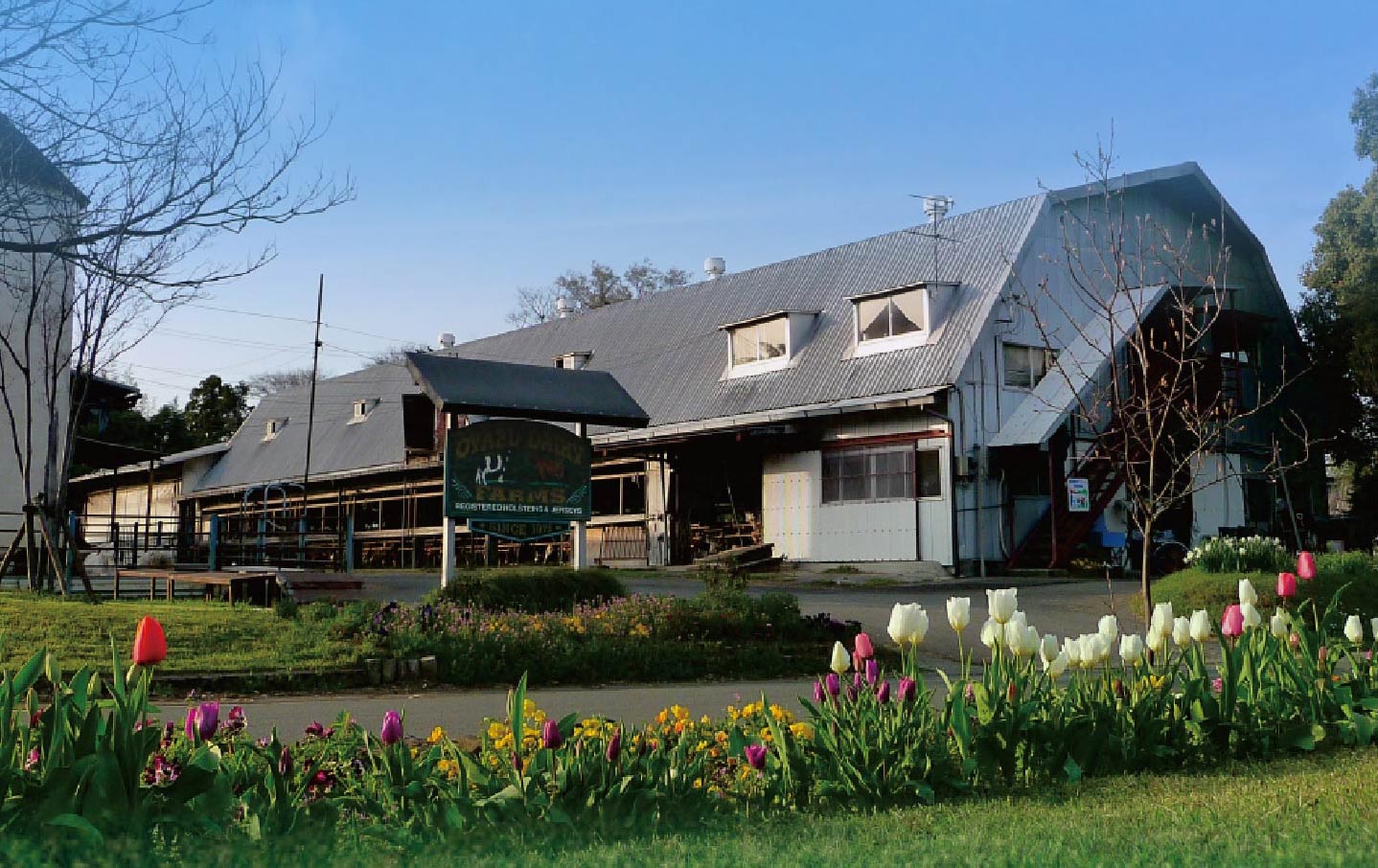
-
■ Our Story
Oyabu Dairy Farm is located in Koshi City, Kumamoto Prefecture, a town with a familiar name in the dairy farming industry - Calf is pronounced Koshi in Japanese. This area is called the Kikuchi Plateau and is one of the biggest dairy farming areas in western Japan.
The origin of Oyabu Dairy Farm was when my father, Masakatsu, entered high school, and he started to raise a Holstein cow just right next to a Kumamoto red cow raised by my grandfather.
After Masakatsu had some training in Hokkaido and Fukuoka, he built a King construction barn in 1975 and began his business as a full-time dairy farmer. He still uses his own compost to make field soil, grows feed without chemical fertilizers, and is raising approximately 90 dairy cows.
He married my mother, Mayumi, who was an elementary school teacher. Around the same time, the area was converted into housing land, and they started agricultural events together with local farmers and volunteers. The goal was to introduce local agriculture and dairy farming to new residents. As a part of their activities, they started a farm experience workshop and also became members of the establishment of the National Dairy Education Farm. Later, the farm was certified as a dairy education farm, and we are still conducting activities such as farm exploration, milking experience, corn mazes, etc. These activities are mainly led by my mother, and we hope that our customers will experience the "warmth of life and the cycle of life (food)".
After I, Yusuke, joined my parents' farm, we established a production division to create a "stage" where our milk shines the most. We believe that our milk can stand out and shine on the stage without any additional value. And now we happily deliver our products with Omega-3 fatty acid fortified milk and beta-casein A2 milk to all over Japan and to the world!
I enjoy crafting and traveling abroad. So far, I have visited 22 countries and eaten the local dairy products in each country. I was curious about the thoughts that dairy farmers around the world express in their dairy products. Taking advantage of my travel experience, I focus on producing something unique, and I wish to become "the one chosen" by many people.
-
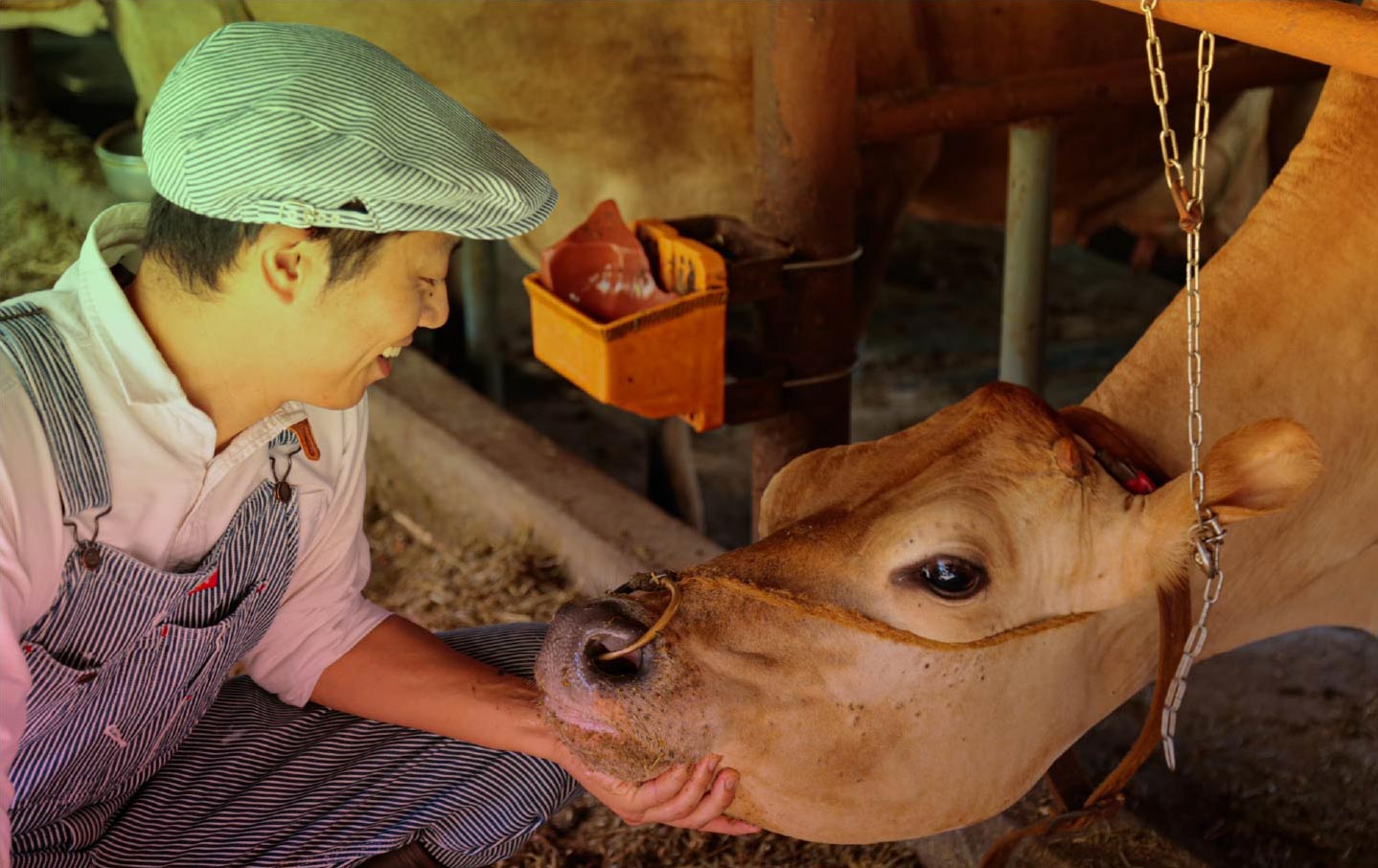
-
■ A crisis and a challenge
In 2011, I experienced a production adjustment for the first time and started to think about the significance of the farm and my own role as a dairy farmer. The dairy industry is easily tossed about by external forces such as agricultural policies and foreign exchange rates. In the worst-case scenario, raw milk production adjustments force some farms to discard their milk, and it occurs every decade.
It takes three years from the time a calf is born to squeeze a drop of milk. My heart ached when I needed to dispose of raw milk. It was treated as "industrial waste" and couldn't be flushed down the sewage system. I was shocked that the milk that my parents and I had spent so much time and effort on was treated as industrial waste. Since milk is collected in one place and distributed to various sales channels, it is packed and sold together with milk from other farms. Therefore, even if our family's farm disappears, other farms will just make up for our products, so no one will be in trouble. This fact made me feel anxious because I felt that we had no value at all as producers.
In addition, dairy farmers cannot sell the milk directly to customers without permission. Obtaining a manufacturing license to sell milk directly is considered the most difficult of all production licenses. This is because, according to the Milk Ministerial Ordinance, the milk producer must clear strict screening by the public health department and has to have facilities equipped with sanitary management techniques and high-cost equipment.
Even if we solve the financial problems of capital investment and obtain a manufacturing license, dairy farmers face a harsh reality. It is difficult to devote time to daily farm tasks such as milking every morning and night and field work in the daytime. Under such circumstances, I spent an entire year trying to obtain a manufacturing license and somehow managed to do so. I believe that the meaning of our existence is to become a producer to be chosen by our customers. We can offer our dairy products directly to our customers after we obtain the license. It made us a strong producer that is not defeated by external factors.
However, in the early days, milking was done in the morning, working in the fields in the afternoon, milking again in the evening, and then we could finally begin manufacturing. When we finished cleaning after manufacturing, it was already midnight, and at 4 a.m. we checked the fermentation and realized we already needed to start milking in the morning.
-
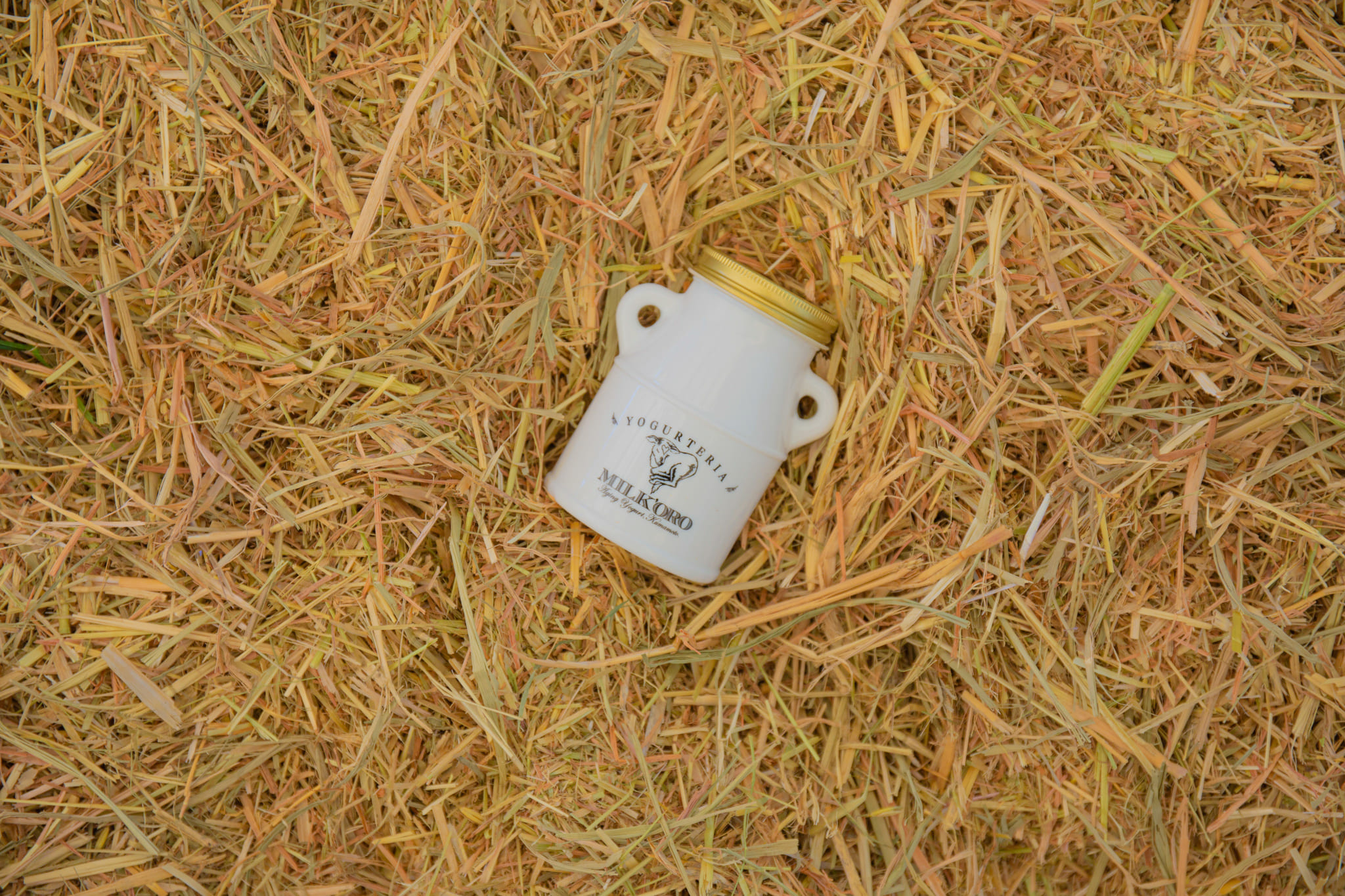
-
■ Why Yogurt?
Even though there are many major manufacturers and dairy farmers selling dairy products around the world, I started producing yogurt too. What I want to do is to express the difference in milk.
It is difficult to tell the difference. The milk fat percentage alone does not indicate "density" in taste. The certain amount of sodium in the milk also makes it feel "thick."
Typically, consumers select milk based on the names of famous production areas, such as Hokkaido or Aso. And unknown producers are not chosen easily, so I did not choose to produce milk because I felt bad for our cows.
How about ice cream? When you eat ice cream, you will taste its flavors and secondary ingredients. As a result, it is difficult to tell the difference of milk.
How about cheese? In the production process, we have to throw away 90% of the milk as whey. As a dairy farmer, I did not want to waste even a drop of milk. We took the time to build the soil and grow the fodder in our fields to produce this milk.
We found that only yogurt could express the difference in the quality of our milk.
People in Japan typically think of yogurt as a daily food product; it looks white and gelatinous, and usually it costs around 100 yen for three jars. No matter how much care you put into the raw milk, you cannot tell the difference between it and the one without care and attention. Even if it is made from skimmed milk powder! Because it will be white and gelatinized after all.
However, the non-homogenizing process allows the high milk quality to be expressed in the "cream layer" so that the difference can be literally seen by your eyes. The "non-homogenized method" also increases the number of lactic acid bacteria by the power of natural fermentation. It turns out to be our unique yogurt with health function. And it doesn't irritate your stomach due to breakdown of lactose during the fermentation process.
-
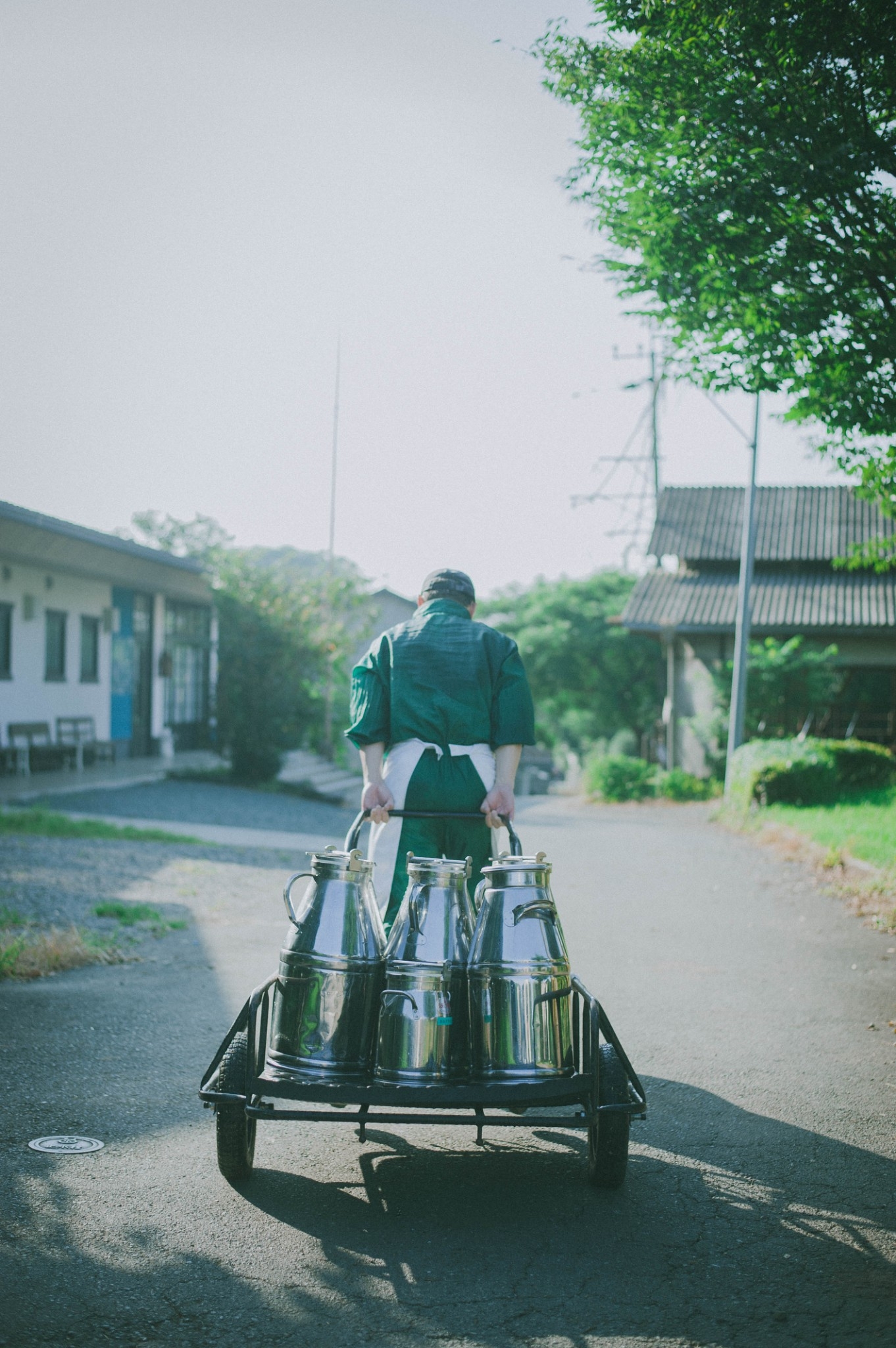
-
■ To become a dairy farmer, you need
‘’ We want to be a farm that people are happy to have. And to be a producer, that is needed.’’
We would like our customers to enjoy not only our products but also our farm environment. We will continue offering "tasty and functional products."
To pursue this belief, I traveled to France to participate as a starting member in the "France Omega-3 Project," organized by the Kyushu Bureau of Economy, Trade, and Industry and the Kyushu Bio-Cluster Council (KBCC). I then visited Bleu Blanc Coeur (BBC: Organic Produce Cooperative).
The BBC is an organization that focuses on flax seeds, which are rich in omega-3 fatty acids, and is working to improve the quality of agricultural and livestock products. And they create products that are useful for "human health."
BBC's slogan is: Keep livestock, people and environment healthy. BBC's activities and products have been adopted by the French government for its national nutritional health program. And they were awarded the European Weight Control label. It is also officially recognized as a method to reduce greenhouse gas emissions (controlling methane gas emitted by livestock).
Pierre is one of the BBC founders and a dairy farmer from Brittany. I visited him at his farm and asked him about his thoughts on the establishment of BBC.
“ We grow food from the soil, raise cows and provide agricultural products. The farmers are in the center of the food chain. This is why we have to take responsibility for our children, consumers, agricultural and livestock products, and the global environment." Pierre said. I agreed with his vision and missions as a dairy farmer (also as a producer) and started dairy farming using BBC's technology. Later, in 2013, the Kyushu Regional BioCluster Promotion Council signed a comprehensive collaboration agreement with the BBC in France and the MOU international collaboration project with BBC in France was launched. At our dairy farm, the BBC technology has allowed us to keep our cows even healthier, we can milk more and we can have more natural omega-3 fatty acids in freshly squeezed milk. We are currently working on a product development using Jersey milk rich in omega-3 fatty acids, which is a rejuvenating ingredient.
-
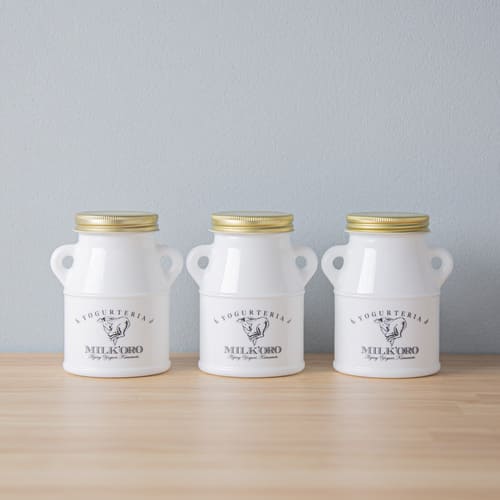
-
■ About MILK'ORO Aging Yogurt
MILK'ORO Aging Yogurt was developed as part of the France Omega-3 Project.
MILK'ORO aging yogurt has the following characteristics.
(1) Japanese BBC standard raw Jersey milk
Omega-3 fatty acids: We use Jersey milk. It is well balanced with omega-3 fatty acids (unsaturated fatty acids such as alpha-linolenic acid), which are effective for anti-aging, anti-metabolic, and blood fat lowering effects.(2) Cream Top: We do not destroy the milk fat in the yogurt. You can enjoy the thick, cream cheese-like layer on top.
(3) Aging: Ripening type. It is milky and sweet when freshly made. And It gradually matures and the sourness and aroma will be richer while lactic acid bacteria increase.
(4) Additive-free: Made only with 100% home-produced raw milk and Japanese beet sugar.
(Beet sugar is the only sugar that has a warming effect on the body. It also contains a lot of oligosaccharides and is rich in nutrients for lactic acid bacteria, which are good nutrients for lactic acid bacteria to regulate the intestinal flora.)The product name: MILK'ORO comes from [MILK + ORO (gold in Italian)and means golden milk]. Why is it called gold? This is because we want to polish the taste of our milk and provide our customers with not only good taste and health, but also a sparkling experience.You can feel this message in our signature thick creamy layer.
MILK'ORO yogurt is packaged in an original glass bottle made from a milk-can-shaped white glass (Gyoku) bottle. This white glass is manufactured by only one company in Japan and is a venerable glass bottle used as a container for sacred sake at Ise Jingu Shrine.
When we visited the time-honored Bon Marché and Galeries Lafayette in France for the project, yogurt was in glass bottles, and when we asked local dairy manufacturers, they told us that glass or ceramic bottles are the traditional way of making yogurt. This is because the plastic material may transfer the plastic odor to the milk or dissolve the material.
We chose this glass bottle for our flagship, MILK'ORO yogurt, because we believe it is the only way to deliver our milk in the best condition to our customers. This glass is stronger than ceramic. Generally speaking, dairy products are easily affected by odor. And this natural material is odorless, so this is an ideal container for dairy products. In European supermarkets, half the racks for yogurt are in glass bottles. This is part of their food culture.
During my journey around the world, I have almost never seen two-layered or aged yogurts, maybe with only 3% or so if there are some in the market.
In Japan, there are also very few two-layer yogurts in the market because the production process for non-homo yogurts is different from the ordinary one.
Here are the reasons.
1: You can’t collect only thick and fine quality raw milk, only light milk is used for the ordinary yogurt.
2: The farmers which can produce yogurt by non-homo processes are still very few.
( The yogurt manufactured in major companies are inconsistent therefore it causes complaints from consumers. )3: The milk fat is separated from the cream and sold as fresh cream, so that no layers are formed.
Thanks to our customers, our products have been recognized gradually, and we have received many awards and interviews from the media. We are truly grateful and very proud to be dairy farmers.
2017' JAPAN MADE BEAUTY AWARDS Grand Prize
2017' Team Chef Competition Most Votes
2017' OMOTENASHI SELECTION Gold Award
2017' Japanese Treasures Grand Prix Kumamoto Grand Prix
2018' Japanese Treasures JAPAN Grand Prix Grand Prix Winner
2018' Treasures of Japan WORLD Grand Prix Second Prize
2018' 6th Industrialization Award, Minister of Agriculture, Forestry and Fisheries Prize
2018' Selected as a regional future driving company
2019' Dawn of Gaia: Treasures of Japan
2020' Dawn of Gaia: Treasures of Japan - Part 2
2020' Selected as one of the 300 small and medium-sized enterprises
2021' Manten Aozora Restaurants
-
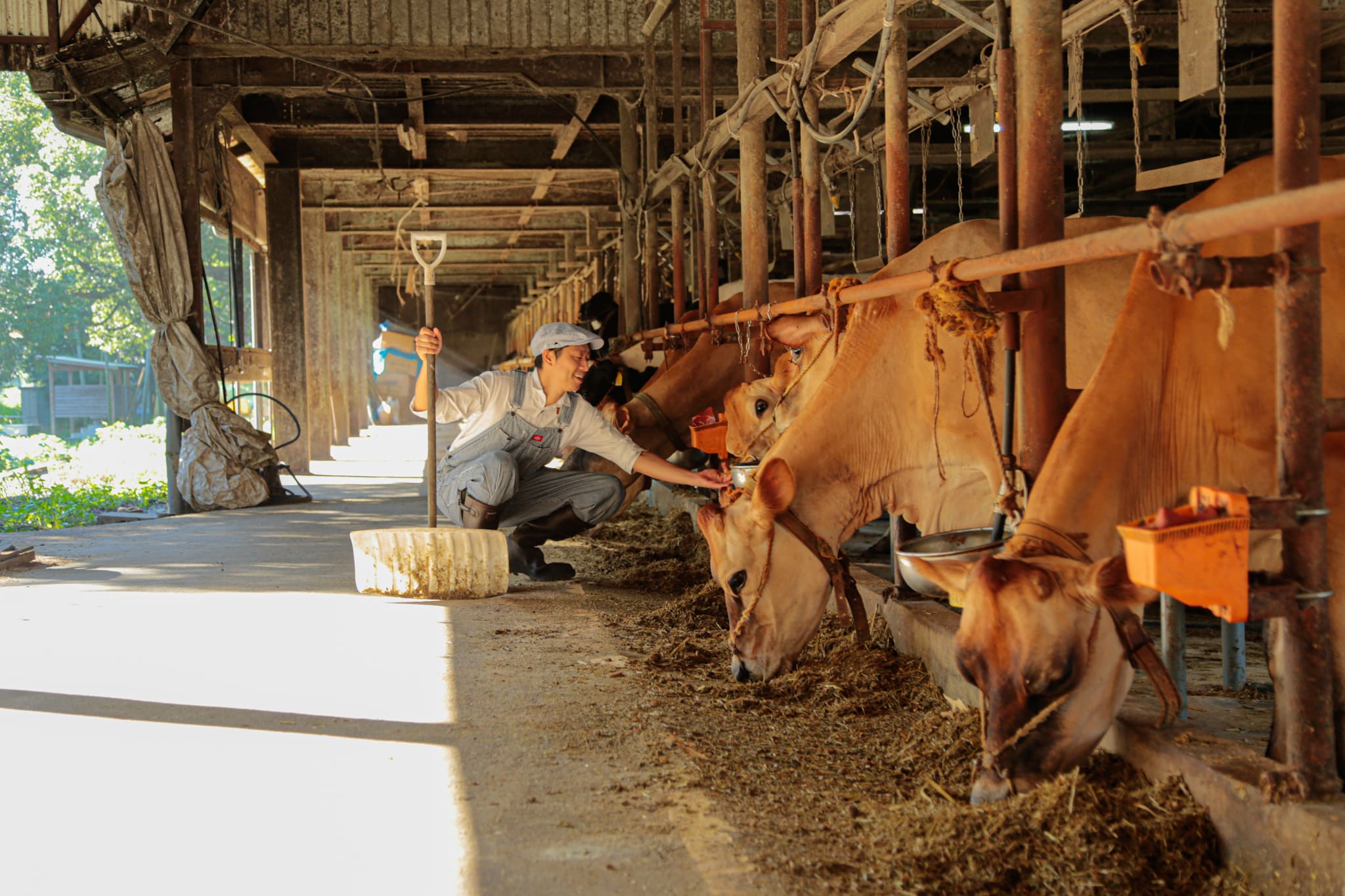
-
■ It's time to shine!
The main task of dairy farms is to milk the cows, and in order to do so, female cows are needed.
However, 50% of the calves are males. I disliked myself with the fact that I used to be disappointed when a male calf was born, since we only need females for producing milk.
Moreover, Jersey calves are smaller than other breeds of cow, so they are not much needed on feedlot farms. Even if they are raised for two months after birth and put up for auction, they can only be sold for about 1,000 yen.
In some areas, they are euthanized or slaughtered shortly after birth or treated as if their lives have no value. My heart broke. As a dairy farmer, I agonized over the possibility of creating a place for male Jersey calves so that their lives would not be wasted.
If a female calf is born, we can process raw milk into dairy products. But if a male calf is born, why not raise them to become good meat? But wait, it normally takes 3 years to raise, and the cost of feed and facilities is very expensive… I tried to think of other possible solutions. Let's not raise them normally, I thought. If we can shorten the raising period to one year, we can reduce costs and be able to offer fine veal.
Since then, we have started to apply the Omega-3 Project to raising male calves as well. And this method of enhancing omega-3 fatty acids made it possible to detect ALA in our veal meat.
Mother Jersey cows have been fed grass, which is specialized for producing omega-3 milk, for their entire lives. So that their meat contains Omega-3. Even after they cannot produce milk any more and they lose their value as economic animals, if we re-fatten them, they will be delicious meats. We may be able to create a stage for their lives to shine one last time.
A new idea was born. Dairy farmers are producers. And our mission is to set a dedicated place for our cows to shine in our farm.
-
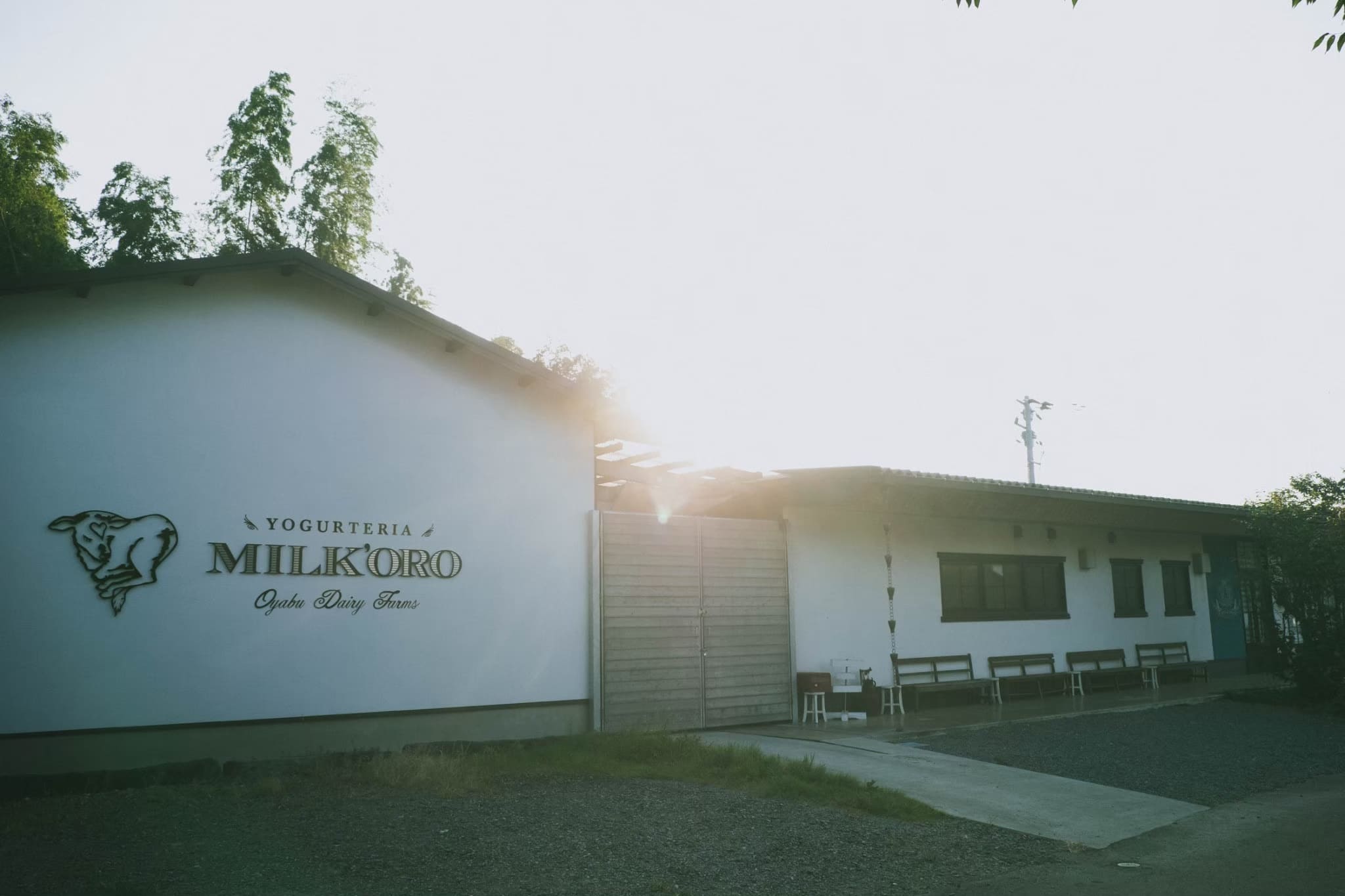
-
Finally.
It has been 10 years since we started manufacturing in 2012. In 2019, the construction of our new factory was completed.
Thanks to many of you, our farm and milk have gradually been recognized. Thank you very much.
In addition to the three dining scenes—breakfast, lunch, and dinner—we propose something extra.
First, a side dish of yogurt dip to go with your meal,
Next, a snack-type yogurt for snack time, and
Finally, premium sweets for evening bliss.
We will strive to develop products and keep offering "delicious experiences" to our customers. We are the parents of our cows, and we create "a place where our children can shine the brightest!" And our will to be "the one chosen" still carries on.
